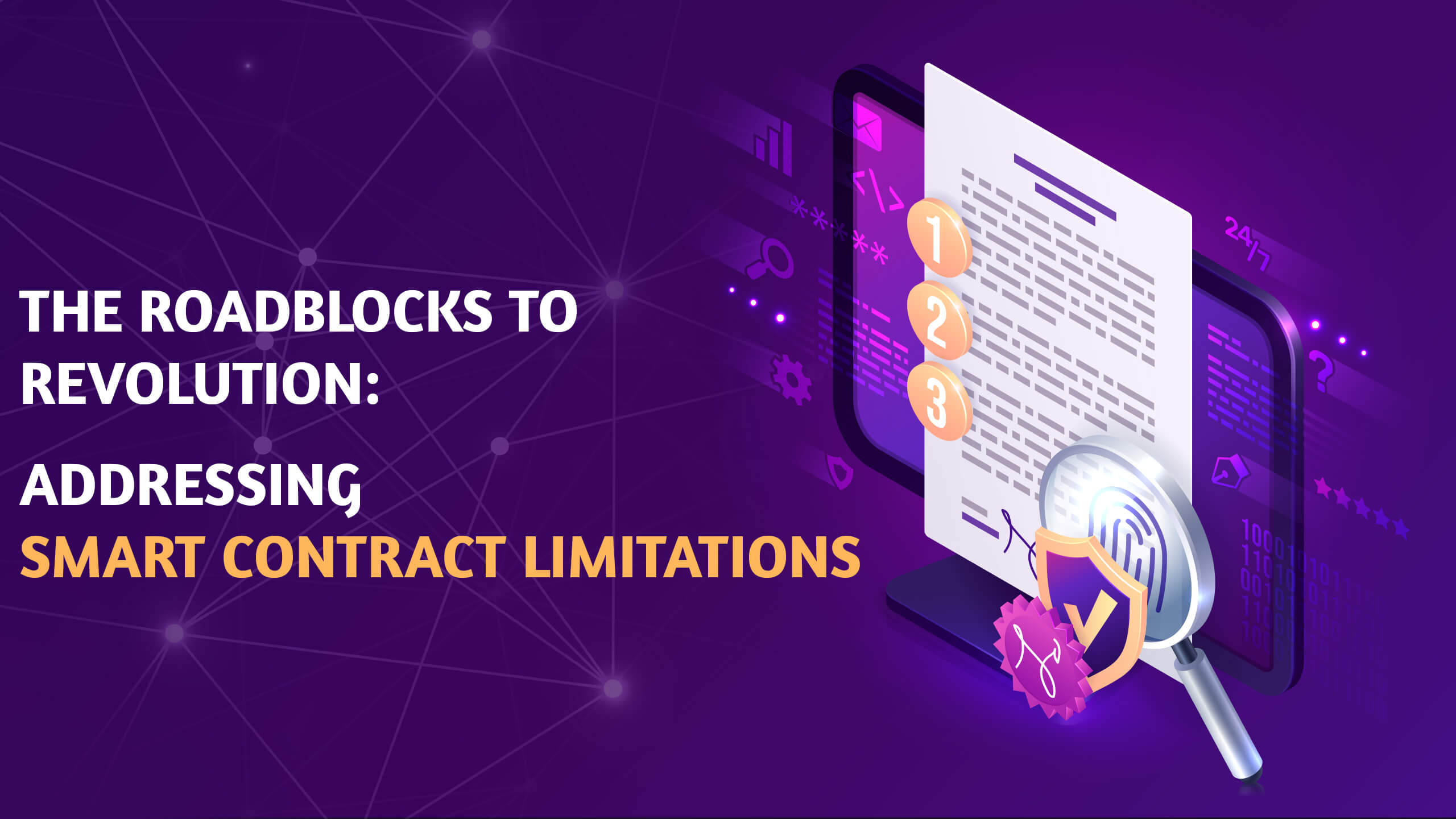Introduction to Smart Contract Development
Understanding Smart Contracts
Imagine a vending machine. You insert money, select a product, and the machine automatically dispenses it. This simple example showcases the core concept of a smart contract development – a self-executing agreement stored on a blockchain.
Think of it as a digital contract with pre-defined terms and conditions written in code. Once deployed on the blockchain, the contract enforces its terms automatically when pre-determined conditions are met, eliminating the need for intermediaries and guaranteeing transparency and security for all participants.
Importance and Benefits
Smart contracts revolutionize how agreements are formed and executed. They offer several key advantages:
- Security: Blockchain technology ensures immutability and tamper-proof records, minimizing the risk of fraud or manipulation.
- Transparency: All participants have unrestricted access to the contract’s terms and execution history, fostering trust and accountability.
- Efficiency: Automation removes the need for manual processes and third-party involvement, leading to faster transactions and reduced costs.
- Trustlessness: No central authority is required to enforce the contract, enabling decentralized and peer-to-peer interaction.
These benefits hold immense potential for various industries, from finance and supply chain management to healthcare and voting systems.
Basics of Smart Contracts
Definition and Functionality
A smart contract is a self-executing program stored on a blockchain that automates the execution of an agreement when predefined conditions are met. It acts as a digital escrow, holding assets (like cryptocurrency or data) until specific criteria are fulfilled.
Think of it as a computer program that follows a set of instructions written in code. These instructions define the contract’s terms, including:
Participants: Who is involved in the agreement?
Conditions: What needs to happen for the contract to be executed?
Actions: What happens when the conditions are met?
Components of Smart Contracts
1. Code
The core element of a smart contract is its code, written in a programming language specifically designed for blockchain development (e.g., Solidity for Ethereum). This code defines the contract’s logic and functionality.
2. Data
Contracts can store and manage data related to the agreement, such as the participants involved, the value of assets held in escrow, or the status of the contract’s execution.
3. Participants
Individuals or entities interacting with the smart contract, including those who deploy the contract, those who interact with it to fulfill conditions, and those who receive the benefits upon completion.
How Smart Contracts Work
Understanding how smart contracts work requires grasping three key concepts:
1. Decentralization
Unlike traditional contracts facilitated by a central authority, smart contracts function on a decentralized network like a blockchain. This means there’s no single entity controlling the execution, ensuring transparency and security.
2. Immutability
Once deployed on the blockchain, a smart contract’s code and stored data are unchangeable. This guarantees the integrity and reliability of the agreement, as the terms cannot be modified after the contract is created.
3. Automation
When pre-determined conditions are fulfilled through user interaction or external events, the smart contract automatically executes the predefined actions, removing the need for manual intervention. This ensures efficiency and accuracy in the execution of the agreement.
Tools and Platforms for Smart Contract Development
While various blockchain platforms support smart contract development, certain options stand out due to their popularity, features, and ease of use. Here’s an overview of some of the most prominent:
Ethereum
1. Solidity Programming Language
Solidity is the dominant programming language for smart contract development on the Ethereum platform. It’s a high-level, object-oriented language designed specifically for writing secure and efficient smart contracts. Its popularity stems from its:
- Readability: Similar syntax to JavaScript and Python, making it easier to learn and use.
- Large developer community: Extensive resources and support available for learning and troubleshooting.
- Security: Built-in features and tools to help developers write secure code and minimize vulnerabilities.
2. Truffle Framework
Truffle is a popular development framework that simplifies the entire smart contract development lifecycle on Ethereum. It offers features like:
- Compilation and deployment: Easily compile Solidity code and deploy contracts to the Ethereum blockchain.
- Testing and debugging: Provides tools for unit and integration testing, aiding in identifying and fixing bugs.
- Abstraction: Offers abstractions for common tasks, such as managing accounts and interacting with the blockchain.
3. Remix IDE
Remix is a web-based integrated development environment (IDE) specifically designed for developing and deploying smart contracts on Ethereum. It allows developers to:
- Write and edit Solidity code directly within the browser.
- Compile and deploy contracts to testnets or the mainnet.
- Debug contracts using a built-in debugger to identify errors and issues.
These tools, combined with Ethereum’s established infrastructure and vibrant community, make it a compelling choice for beginners and experienced developers alike to explore smart contract development.
Other Blockchain Platforms
While Ethereum is leading the way, other notable platforms offer alternative options for smart contract development:
1. Hyperledger Fabric
This platform, designed by The Linux Foundation, focuses on enterprise-grade blockchain solutions. It offers:
- Modular architecture: Allows for customization of components to suit specific enterprise needs.
- Permissioned access: Suitable for private blockchain deployments where participants are pre-approved.
- Strong security features: Designed for highly secure and confidential data management.
2. EOSIO
This platform aims for scalability and high-performance for smart contracts. Its key features include:
- Delegated Proof-of-Stake (DPoS) consensus mechanism: Enables faster transaction processing compared to Proof-of-Work (PoW) used by Ethereum.
- Vertical integration: Integrates various functionalities like user accounts and governance within the platform.
- User-friendly development experience: Aims to simplify smart contract development with additional features and tools.
3. Corda
This platform specifically focuses on building blockchain applications for the financial industry. It offers:
- Focus on privacy and confidentiality: Designed for secure sharing of data among trusted parties.
- Regulatory compliance: Features built-in to facilitate adherence to financial regulations.
- Interoperability with existing systems: Allows integration with existing financial infrastructure.
Steps to Develop a Smart Contract
Developing a secure and reliable smart contract requires careful planning, execution, and testing. Here’s a breakdown of the key steps involved:
Define Requirements
- Clearly define the purpose and functionalities of the smart contract.
- Identify the participants involved and their roles within the agreement.
- Determine the data to be stored and managed by the contract.
- Outline the conditions that trigger the execution of specific actions.
Choose the Right Platform
- Consider factors like the desired features, scalability requirements, and regulatory compliance.
- Evaluate the available tools and development resources for the chosen platform.
- Assess the developer’s experience and comfort level with different platforms and languages.
Writing Smart Contract Code
1. Best Practices
- Modularize code: Break down complex logic into smaller, reusable functions.
- Handle errors gracefully: Define appropriate behavior for unexpected situations.
- Optimize gas usage: Minimize the computational resources required for contract execution.
- Utilize libraries: Leverage existing, well-tested libraries for common functionalities.
2. Security Considerations
- Thorough code review and testing: Identify and address potential vulnerabilities before deployment.
- Use secure coding practices: Avoid common pitfalls that can lead to exploits.
- Utilize secure smart contract auditing services: Seek professional assistance to identify potential security flaws.
Testing and Debugging
- Implement unit testing to validate individual functions of the smart contract.
- Conduct integration testing to ensure smooth interaction with external systems (if applicable).
- Utilize debuggers and logging tools to identify and fix errors in the code.
1. Unit Testing
Test each function of the contract in isolation to ensure it behaves as expected.
Use mock data to simulate real-world scenarios during testing.
2. Integration Testing
Test how the smart contract interacts with other components of the system (e.g., APIs, user interfaces).
Identify any potential integration issues and resolve them before deployment.
Deployment
1. Mainnet vs. Testnet
- Testnet: A test environment for deploying and testing smart contracts without real-world consequences.
- Mainnet: The live blockchain network where deployed smart contracts interact with real assets and users.
Popular Use Cases of Smart Contracts
The versatility and automation capabilities of smart contracts make them applicable to a wide range of industries, fostering innovation and streamlining processes. Here are some prominent use cases:
Finance and Banking
- Automated payments and settlements: Smart contracts facilitate the automatic execution of financial transactions based on pre-defined conditions, eliminating delays and manual intervention.
- Securing loans and collateral: Smart contracts can manage loan agreements, automatically holding collateral until loan terms are met, and simplifying the process for both borrowers and lenders.
- Trading and investing: Decentralized exchanges utilize smart contracts to enable secure and transparent peer-to-peer trading of digital assets.
Supply Chain Management
- Tracking goods and materials: Smart contracts can record the movement of goods throughout the supply chain, providing real-time visibility and ensuring product authenticity.
- Automating payments based on milestones: Smart contracts can release funds to suppliers upon completion of specific stages in the production or delivery process, improving efficiency and trust.
- Enforcing compliance with regulations: Smart contracts can embed compliance checks within the supply chain, ensuring responsible sourcing and adherence to regulations.
Healthcare
- Secure and confidential medical record management: Smart contracts can store and manage patient data securely, granting authorized individuals controlled access and ensuring patient privacy.
- Automating insurance claims processing: Smart contracts can streamline the claims process by verifying claims information and automatically triggering payouts based on pre-defined criteria.
- Facilitating clinical trials and research collaboration: Smart contracts can manage research data securely and transparently, enabling secure collaboration between researchers and institutions.
Real Estate
- Streamlining property transactions: Smart contracts can automate property ownership transfers, escrow management, and mortgage payments, reducing costs and expediting the transaction process.
- Fractional ownership of assets: Smart contracts can facilitate the tokenization of real estate assets, allowing for fractional ownership and easier investment in real estate projects.
- Automating rental agreements and payments: Smart contracts can manage rental agreements, automatically collecting rent payments and releasing security deposits based on pre-defined terms.
Voting Systems
- Enhancing voting security and transparency: Smart contracts can ensure secure and tamper-proof voting by encrypting votes and automating vote counting, reducing the risk of fraud and manipulation.
- Improving voter accessibility: Smart contracts can enable remote voting, potentially increasing voter participation and making the process more inclusive.
- Automating post-election processes: Smart contracts can automate tallying and result announcement, reducing human error and accelerating the election process.
Challenges and Limitations
Despite their immense potential, smart contracts still face certain challenges and limitations that hinder their widespread adoption:
Security Vulnerabilities
- Code errors and exploits: Bugs or vulnerabilities in smart contract code can be exploited by malicious actors, leading to loss of funds or unintended consequences.
- Social engineering attacks: Users can be tricked into interacting with malicious smart contracts, inadvertently giving up control of their assets.
- Phishing attacks: Users might be targeted by phishing scams, leading them to unknowingly interact with fraudulent contracts that steal their assets.
Scalability Issues
- Limited transaction processing capacity: Some blockchain platforms struggle to handle a high volume of transactions, leading to slow execution times and high fees.
- Storage constraints: Storing large amounts of data on the blockchain can be expensive and impractical, limiting the complexity of smart contracts.
Legal and Regulatory Concerns
- Unclear legal frameworks: The legal status and enforceability of smart contracts are still evolving and vary across jurisdictions, creating uncertainties for businesses and users.
- Regulatory compliance: Smart contracts need to comply with existing and emerging regulations, which can be complex and challenging to navigate.
Interoperability
- Limited interoperability between platforms: Smart contracts deployed on different blockchain platforms often cannot interact with each other, hindering widespread adoption and creating fragmented ecosystems.
Future Trends in Smart Contract Development
The future of smart contracts is brimming with promise, as continuous development efforts address existing challenges and unlock new possibilities. Here are some key trends shaping the future of this innovative technology:
Integration with IoT Devices
The integration of smart contracts with Internet of Things (IoT) devices will open doors for autonomous and decentralized applications. Imagine smart contracts automatically triggering actions based on real-time data from sensors and connected devices, streamlining processes and enhancing automation in various sectors.
Cross-Chain Compatibility
Efforts toward interoperability and cross-chain communication will allow smart contracts deployed on different blockchains to interact with each other. This cross-chain compatibility will break down silos between different platforms, fostering wider adoption and enabling the creation of more complex and interconnected applications.
Advanced Security Measures
Developers and researchers are continuously working on advanced security measures to mitigate vulnerabilities and enhance the overall security of smart contracts. This includes advancements in formal verification methods to automatically identify and eliminate potential code flaws, as well as the adoption of secure coding practices and standardized security audits.
Smart Contract Standards
The emergence of standardized smart contract frameworks will simplify development and increase code reusability. This standardization will allow developers to leverage pre-built components and focus on specific functionalities, leading to faster development cycles and more efficient smart contract creation.
Frequently Asked Questions (FAQs)
1. How secure are smart contracts?
Smart contracts offer a high level of security compared to traditional agreements. They are stored on a blockchain, a distributed ledger known for its immutability, meaning the data cannot be tampered with once recorded. However, security vulnerabilities can still exist due to bugs in the code or social engineering attacks. Employing secure coding practices, thorough audits, and being cautious when interacting with smart contracts are crucial for mitigating risks.
2. Can smart contracts be modified once deployed?
No, once deployed on the blockchain, a smart contract’s code generally cannot be altered. This immutability ensures the integrity and enforceability of the agreement as outlined in the code. However, some platforms offer limited modification capabilities through upgrade mechanisms, but these are typically used for fixing critical bugs and require careful consideration due to potential risks.
3. What programming languages are commonly used for smart contract development?
The most popular language for smart contract development is Solidity, specifically designed for the Ethereum blockchain. Other prominent languages include Rust (used for Solana), Vyper (used for Ethereum), and Hyperledger Fabric Chaincode (used for Hyperledger Fabric). The choice of language often depends on the chosen blockchain platform and developer preferences.
4. How can one become proficient in developing smart contracts?
To become proficient in smart contract development, individuals can:
- Learn the fundamentals of blockchain technology and understand its core concepts like decentralization, consensus mechanisms, and cryptography.
- Choose a smart contract development platform and its specific programming language.
- Take online courses, tutorials, and workshops to gain practical experience in writing and deploying smart contracts.
- Join online communities and forums dedicated to smart contract development to connect with other developers and learn from their experiences.
- Build personal projects and experiment with different use cases to gain hands-on experience and solidify your understanding.
5. What industries are benefiting the most from smart contract adoption?
Several industries are experiencing significant benefits from adopting smart contracts:
- Finance and Banking: Automating transactions, facilitating secure loans and collateral management, and enabling efficient trading platforms.
- Supply Chain Management: Enhancing transparency and traceability of goods, automating payments based on milestones, and enforcing compliance with regulations.
- Real Estate: Streamlining property transactions, enabling fractional ownership, and automating rental agreements and payments.
- Healthcare: Securing and managing medical records, streamlining insurance claims processing, and facilitating collaboration in research.
- Voting Systems: Enhancing security and transparency, improving voter accessibility, and automating post-election processes.







